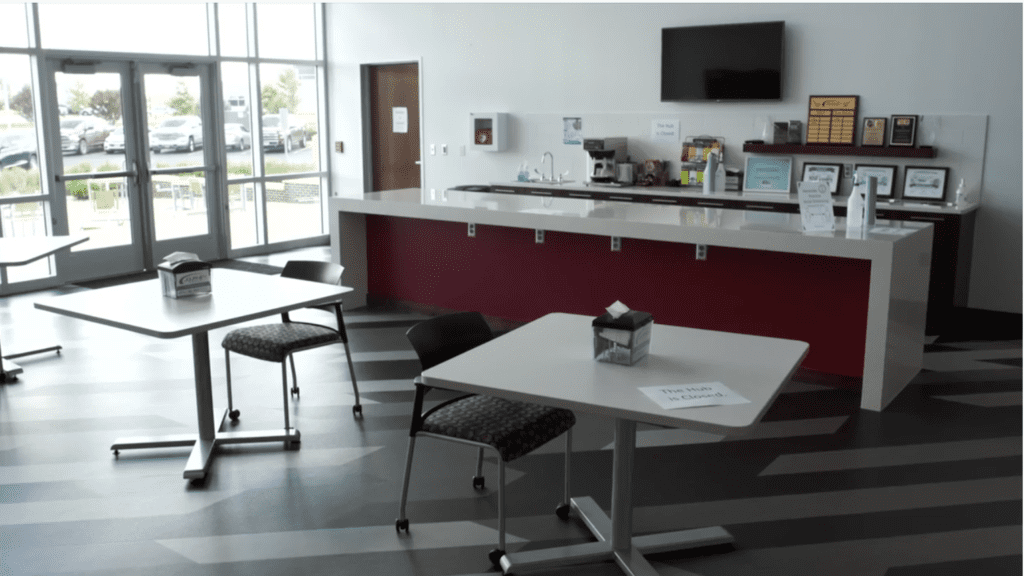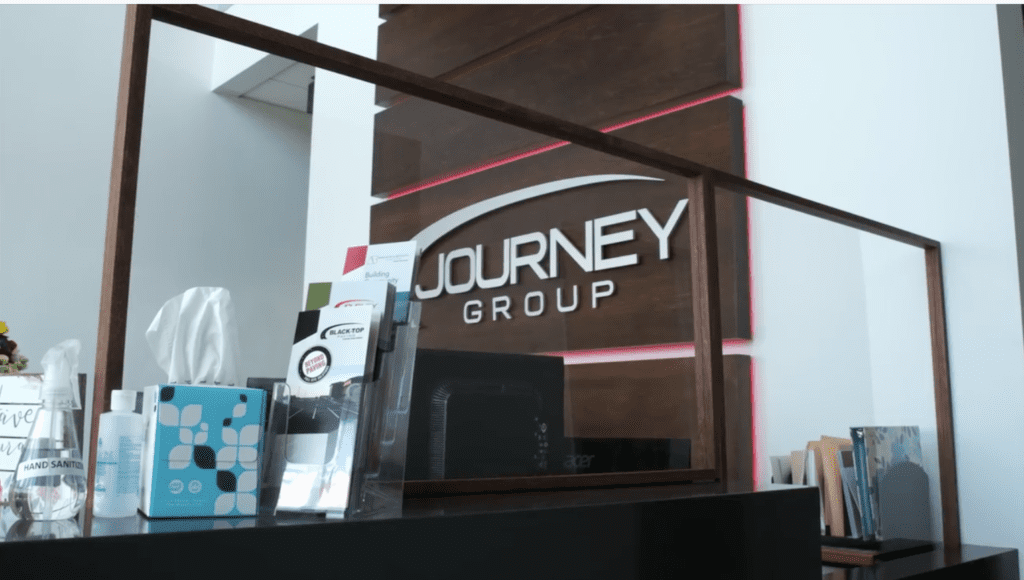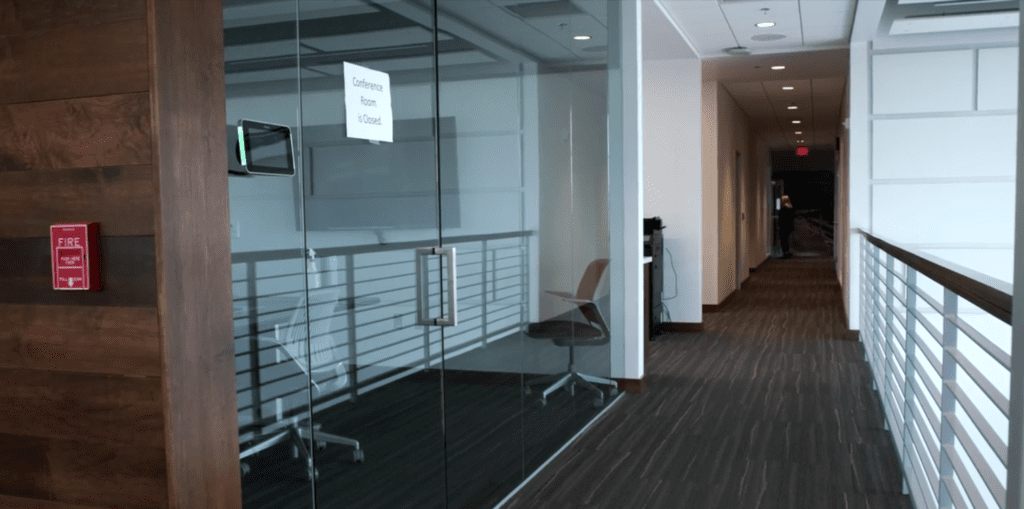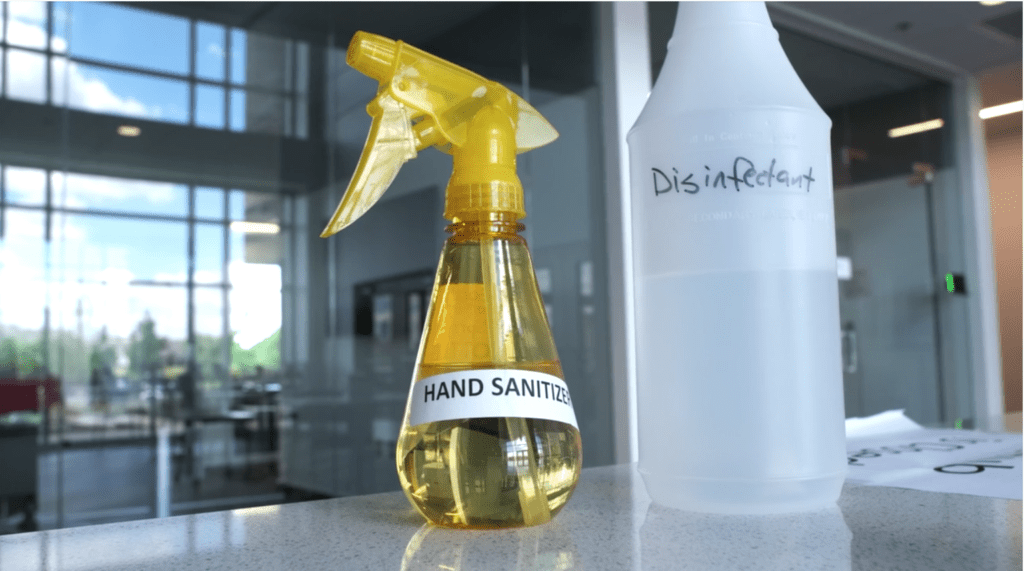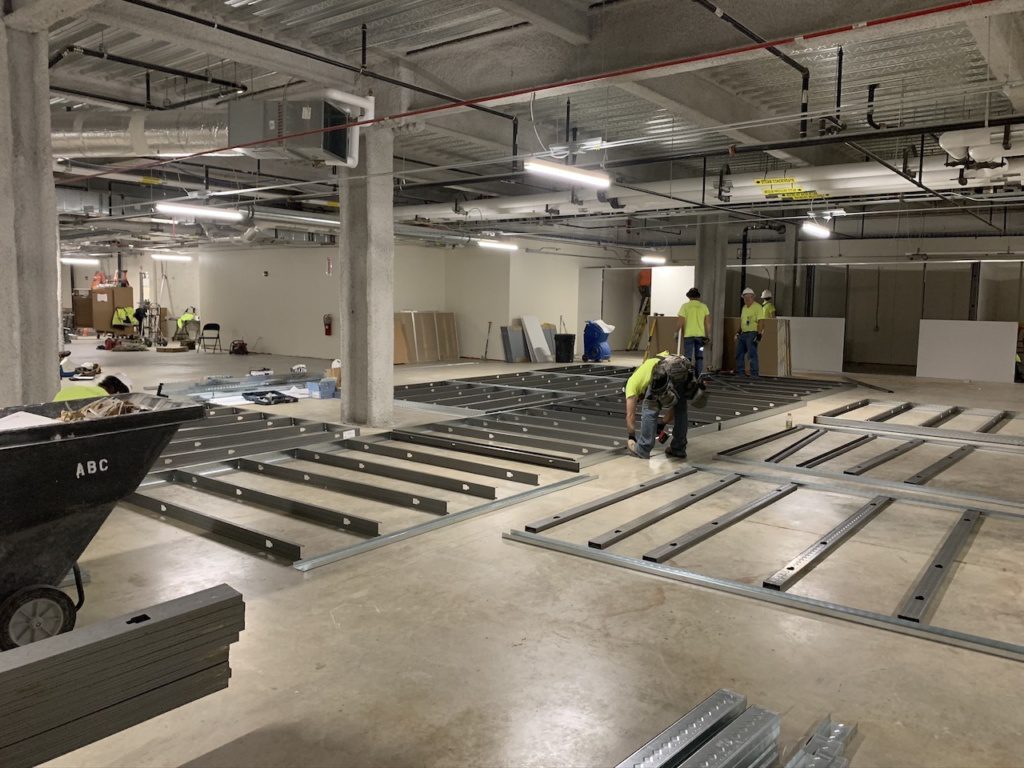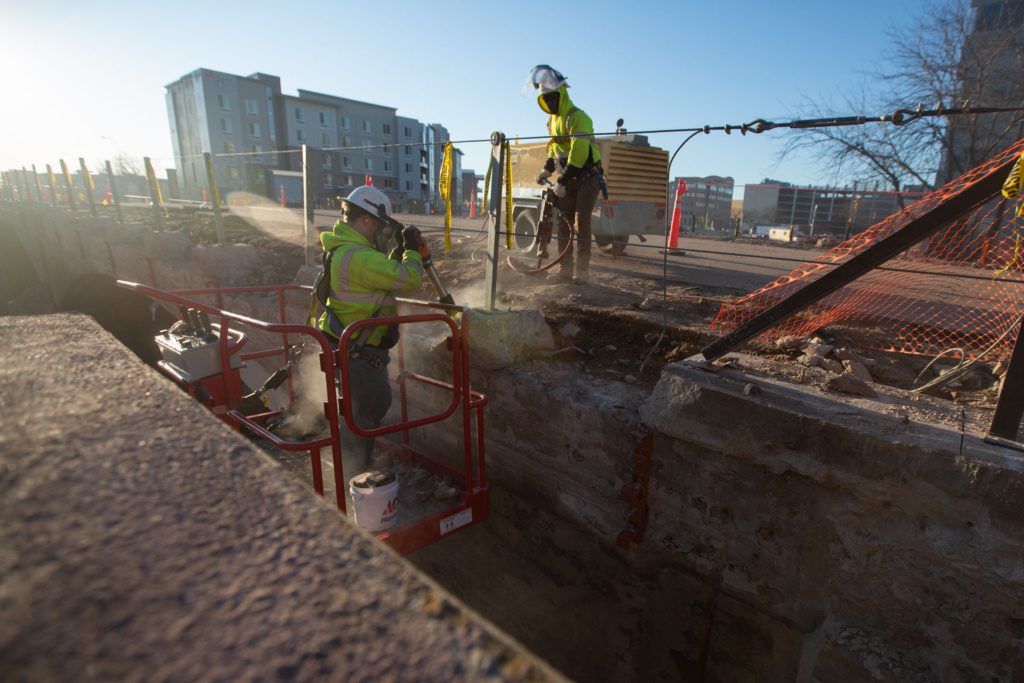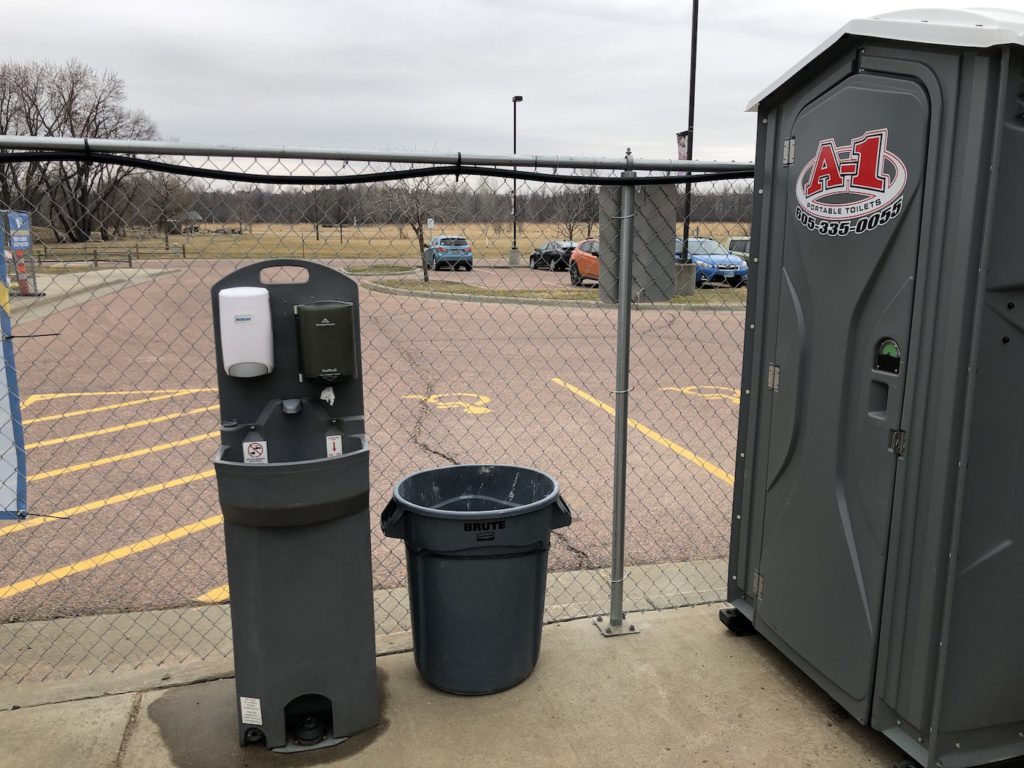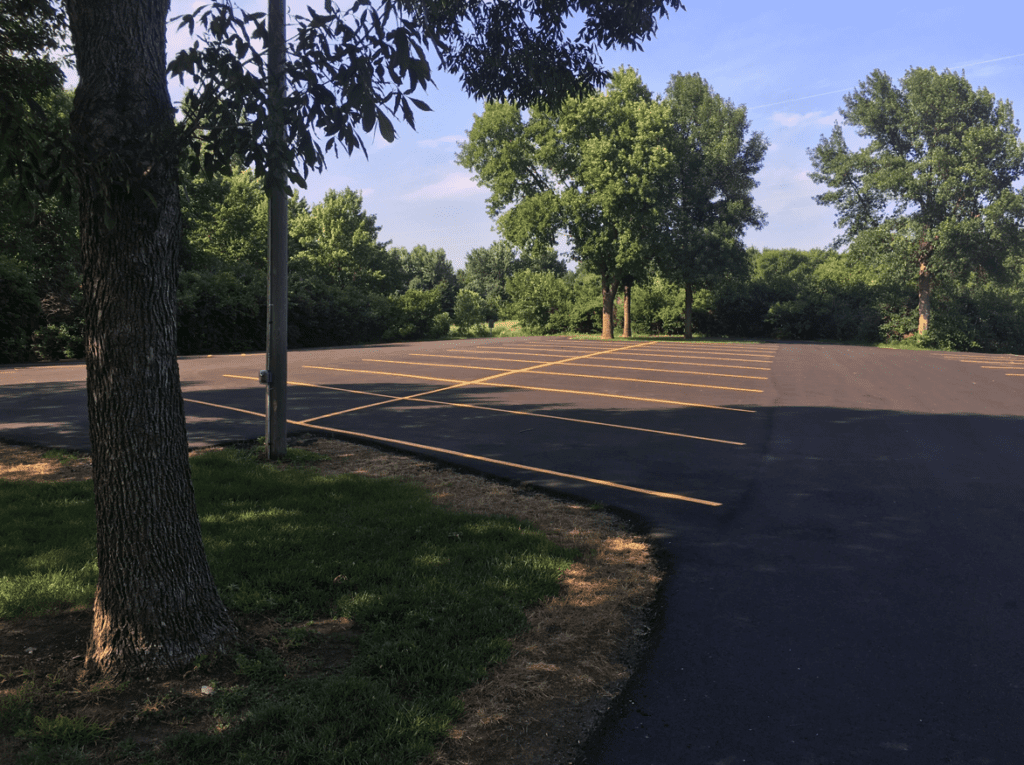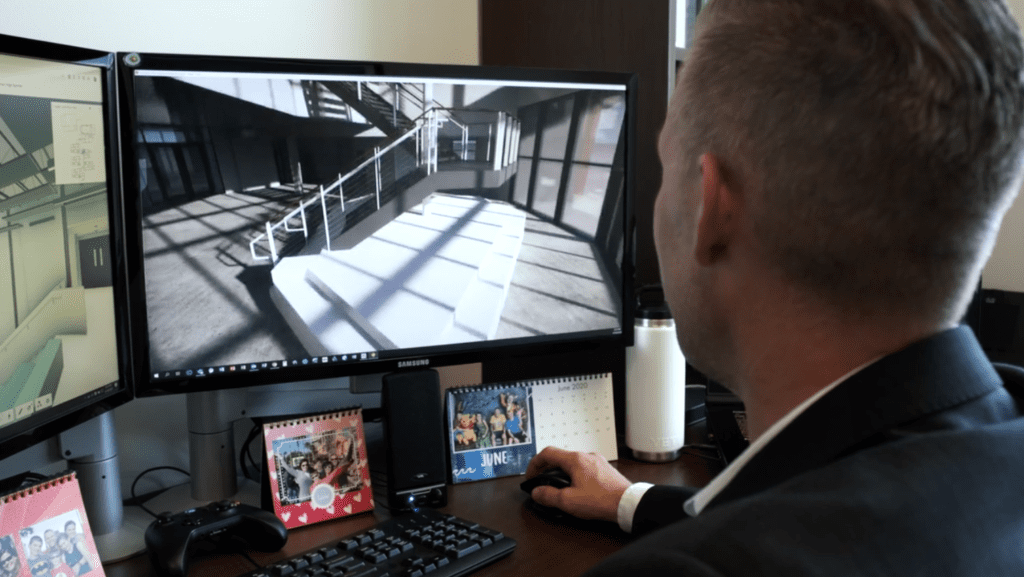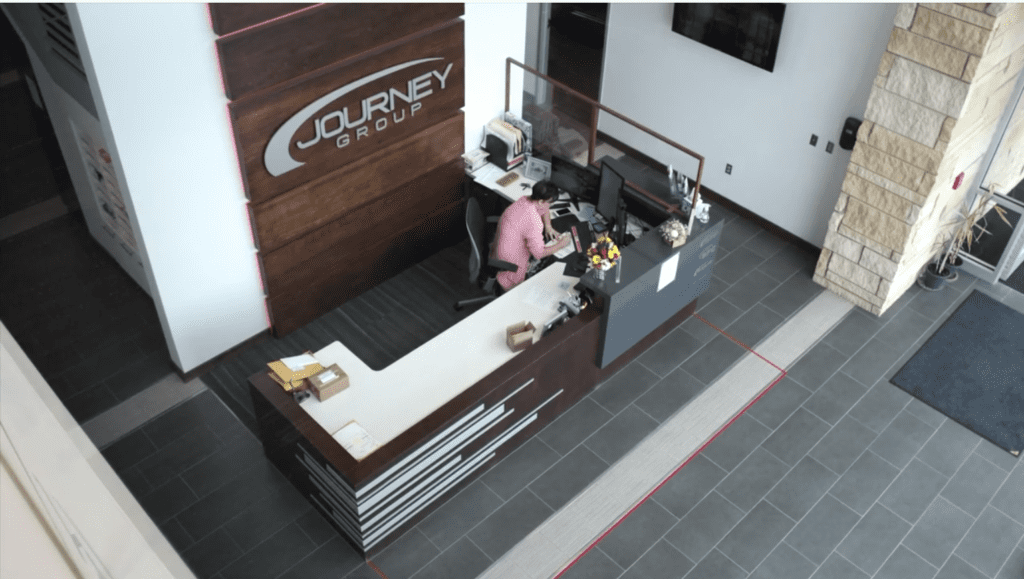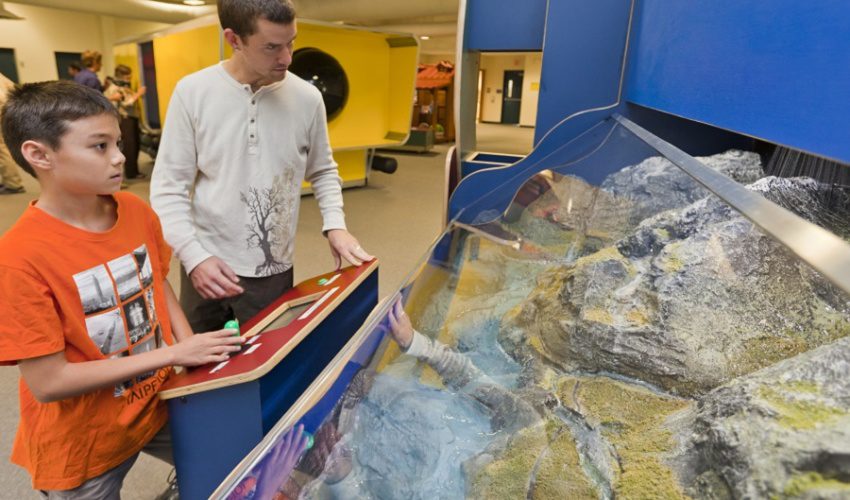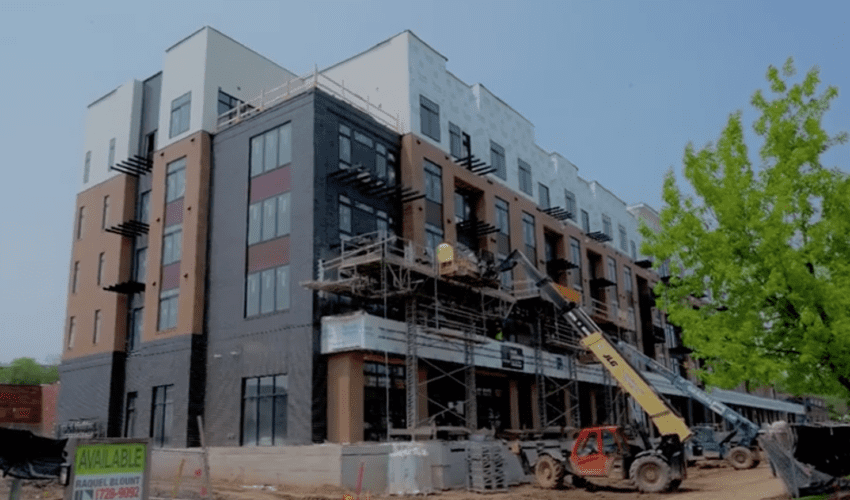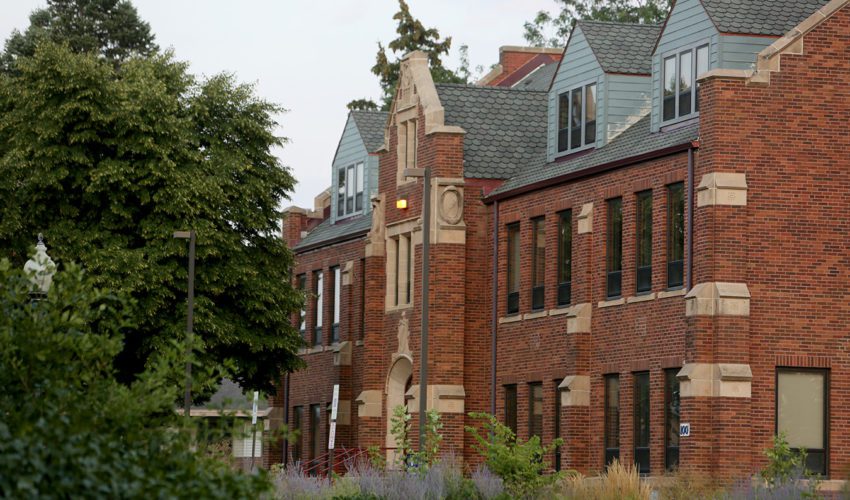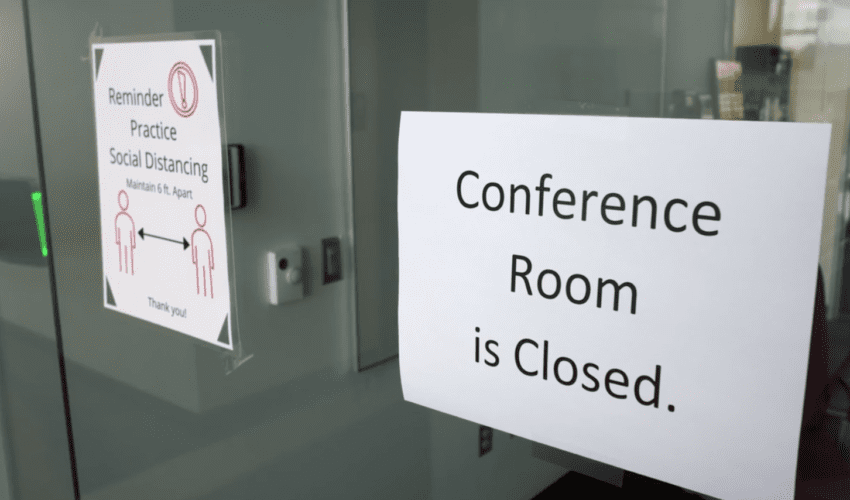Businesses: Is now the time for construction related to COVID-19?
July 20, 2020
This paid piece is sponsored by Journey Group.
Workplaces are being reimagined everywhere as employers try to make offices safe for employees and slow the spread of disease.
But are you wondering where or how to begin?
“A lot of businesses are working and trying to figure out how to get back into operations within their offices and businesses and what is the new normal,” said Darin Hage, vice president of Journey Construction.
“We’ve seen a lot of that in talking to our clients and understand there’s many things to consider. We’re providing various services and ways to help them out.”
The experts at Journey Group are well equipped with staff and are starting to work with clients on projects of all sizes related to COVID-19. We sat down with a panel of them to learn more about how your business can approach similar changes.
First, how would you recommend assessing a workplace for COVID-related risk areas? Are there certain spaces that are most likely to need addressing?
Darin Hage, vice president of Journey Construction: First, obviously, is operations, how to get things in place related to that – whether that’s people on the line working next to each other and workstations, those types of things, making the confined spaces safe again.
And the second is really around circulation – common points of intersection, front entrances, break areas, printers, copiers, those types of things where they have to consider how to manage that.
And third is really in areas of how do you hold meetings? Most of us have gone to virtual meetings, but there’s also a need to meet face to face, how to manage that with head counts, spacing and those types of things.
What are some common construction projects that businesses are starting in the wake of COVID-19?
Joe Niewohner, senior project manager, Journey Construction: Some of the things we’re seeing owners do is take advantage of their employees working at home. They’re having us to remodel projects or upgrades to the office to be ready for when the employees are able to come back.
Right now, we’re seeing a lot of smaller projects. Owners are doing small changes to their buildings to accommodate some of the requirements as a result of COVID. They may be adding partitions or plexiglass, structures to separate people appropriately.
One of the great things we can do is we have teams available to not only price stuff quickly but to be able to mobilize quickly to utilize those resources and get the work done quickly.”
What kinds of things has Journey done with its own office to be more virus-conscious?
Jolene Smith, director of human resources, Journey Group: There were a lot of things we put in place. First and foremost, we always want employees to maintain a 6-foot distance, and that is going to really limit our exposure.
We also limited our group sizes, gatherings. Our common areas and congregation areas are closed such as our hub, our kitchen, our break room.
We installed plexiglass and invisible barriers around our front desk.
Meetings and interviews were conducted or are conducted virtually, as well as we’re trying really hard to limit interaction. So we moved our daily stretches out to once a week, and we’re doing them in the parking lot on Friday mornings.
In order to make sure that we maintain a 6-foot distance for individuals who were working in a cube, we spaced them out and moved them to smaller conference rooms.
Conference rooms were closed, but in our larger ones, we moved chairs and tables around to ensure that they were at least 6 foot in distance.
And the biggest thing we did is to make sure that we had hand sanitizer, disinfectant and alcohol wipes in every office, every conference room, as well as our high-touch and high-traffic areas.
It’s been going really well. People are complying or being respectful of other people. And that’s really what we were asking for.
What kind of time lines would businesses be looking at if they are hoping to do work within their spaces?
Tony Wiseman, director of project development: The size and complexity of a project is really defining the time lines of how quickly we can get started. We do multiple different sizes of projects, anything from a simple one- to two-day project to a couple months, to really sizable projects within the region.
The one consistent approach is we love getting in front of owners and helping guide the process and answer questions. It may be how quickly can we get in the ground or how quickly can we renovate a space, putting together the plan and coordinating to clearly identify all the opportunities or obstacles if there are any and defining when we can get going. That consistent approach really helps us bring out value.
What kinds of precautions are construction crews taking to ensure project sites are safe from disease spread while they work?
Joel Van Ekeren, safety director, Journey Group: For the job sites, what we wanted to do was first take care of our employees. So we bought cloth masks for all employees and families and mailed them to them. We supplied gallons of hand sanitizer and disinfectant for job sites. We limited the access to our job trailers from subcontractors and visitors and even from office personnel. You had to call before you went to set up an appointment and knock before entering.
We followed CDC guidelines. We were very stringent on daily huddles, making sure guys were outside for daily huddles doing 6-foot distancing. As safety director, I felt it was my responsibility to communicate exactly what COVID was, so weekly for a few months we had toolbox talks around that to get information and education.
We made sure that all the equipment and tools were disinfected before we used them and after. We bought wash stations for every portable toilet we had on site. We had soap, water, paper towels and garbage cans to dispose. That all started during COVID, and we’re just going to keep doing that on our job sites for sanitary purposes. It’s been well received.
When we’re inside a building, we’re looking at the square footage and how many people we can safely put into that building, trying to keep our subcontractors and our own people from stacking on top of each other. If two tasks need to be completed in one room, we’re very careful about planning and reorganizing, so there aren’t too many people in one room.
And all these policies and procedures will be ongoing. My hope is we continue even after COVID goes away.
What about work on the outside of the building? If I’ve considered replacing a parking lot or making other exterior repairs, could I still work that in this season while I don’t have as many people coming to my business?
Ryan Kerkvliet, vice president of Black-Top Paving: As you drive around Sioux Falls, parking lots are empty. And you can take advantage of that. There’s a chance to improve your lots without having disturbances to your business. Then when you get back to business, your construction is done.
We’ll come out and evaluate areas like sidewalks. If there are modifications that need to be done due to COIVD as far as drive-thrus or different ways to get customers to the business, we can help out. We can do exterior improvements as far as sidewalks, curb and gutter, approaches and exterior site maintenance.
Some companies had projects planned, and they may not be able to do those projects due to the financial stress of the COVID. So there are definitely less-expensive maintenance things that can definitely maintain or keep your lot from totally getting broken up. And in a few years once you’ve got the money, you can do the bigger project.
Looking ahead, are there industries that might benefit from larger, more long-term projects to help keep employees healthier on an ongoing basis?
Aaron Eich, senior project manager: Locally, we saw just how much COVID-19 affected sectors such as the food industry and manufacturing. It really is acting as an accelerator to consumer attitudes as well as industry processes. We are seeing food production and manufacturing industries go to more robotics and automation to help alleviate downtime during pandemics.
We’re also seeing a shift to just-in-time type deliveries to more of a just-in-case, which means there’s more of a need for warehouse-type space. We can help evaluate your current facility and help you plan and build for the future.
How are technology and virtual design methods helping businesses identify what is needed and how to build more efficiently?
Jamison Mutschelknaus design and construction manager: One of the things we’re able to do with our virtual design is take our models that we’re getting from our design partners, design teams and put them into our software, put a little detail into it, and that allows us to sit down with owners and show them what their options are. We can show them what the costs are, show them what the ramifications of the decisions they’re making could be.
And then once we’ve finalized on the design, we then take all those models and work with our subcontractor team. We take that, and we virtually model, virtually construction and going through all our coordination pieces. That again allows us to save time throughout the whole design process and also saves time during construction and saves money throughout it.
If a business would like advice on how to make appropriate changes to their existing facility, where do you suggest they start?
Tate Johnson, division leader of Ainsworth-Benning Construction, which offers Journey’s services on the west side of the state: If your business is looking at options to change their existing facilities due to the COVID 19 pandemic, we suggest reaching out to construction managers like Ainsworth-Benning to help you work through what your business needs and the changes they need to fit your business due to this new norm. We suggest you give us a call. We’ll work with you on schedule, cost and timing while continuing to operate. We look forward to working with you.
Darin Hage, vice president of Journey Construction: Give us a call. We have a lot of staff that’s ready to jump in and help you out. We understand there’s an urgency to it. There’s a need to get back to certain areas. We have a lot of ideas we can bring. And the nice part is you don’t need to do a full-scale redesign and those types of things. We can bring ideas, implement them pretty quickly and help you out. And we have the staff that’s ready to do it.
Ready to learn more? Click here.


